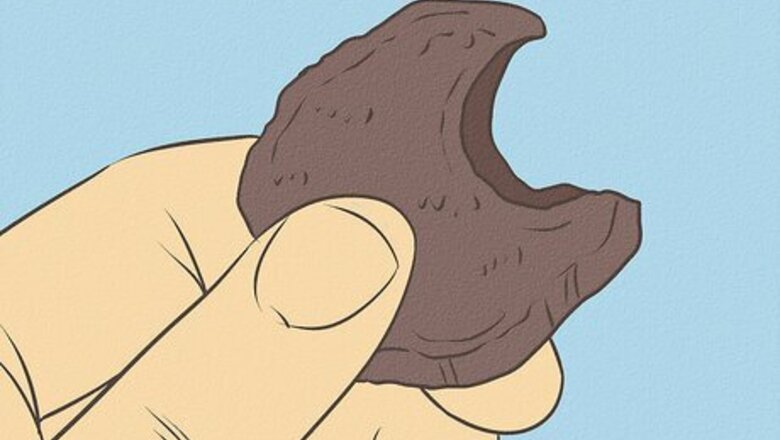
views
X
Research source
Dogs who have eaten chocolate must be treated immediately, as the larger the amount of chocolate and the longer it is in their system, the more danger there is for your pet.
Seeking Veterinary Attention

Assess what type and how much chocolate your dog ingested. Make sure you have as much information on the chocolate and the amount of chocolate eaten when you get on the phone with your vet. The information will allow them to give you their best advice. Baker’s chocolate is the most toxic type of chocolate for dogs, while milk chocolate is the least toxic. Semi-sweet and dark chocolate toxicity falls somewhere in the middle. The toxic dose for theobromine ranges from 9 mg to 18 mg per pound. On average, baker’s chocolate contains 390 mg per ounce, semi-sweet contains 150mg per ounce, and milk chocolate contains 44mg per ounce.

Call your veterinarian for advice immediately. They will tell you the next steps to take, whether it is bringing your dog into their office or taking steps to help them at home. Small amounts of chocolate may only cause some diarrhea and stomach distress. However, it's best to contact your vet no matter how much your dog eats, as its reaction may vary.

Take your dog to the veterinary office, if recommended by your vet. Your veterinarian has the knowledge, staff, drugs and equipment to treat a chocolate overdose. Your veterinarian has drugs to cause vomiting if the ingestion was within the last hour or so. In some cases, your pet may need to be hospitalized for the night and a 24 hour emergency hospital is the best choice.
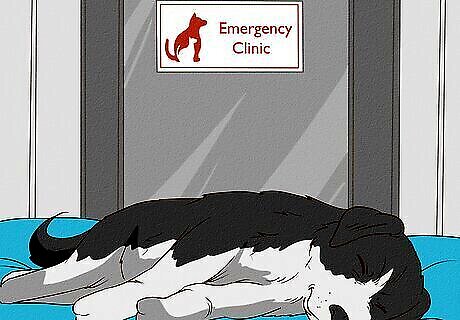
Contact an emergency veterinarian if your normal vet is closed. Accidents don't always happen during office hours, so if you need advice during off hours, find an alternative veterinarian to give you advice or care for your dog. There are some clinics that specialize in animal emergencies. These places are usually open many hours and are a good place to take an animal in distress.
Inducing Vomiting
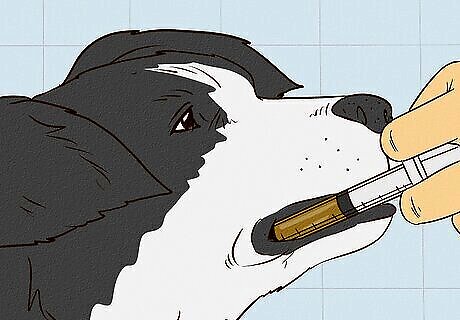
Try to induce vomiting if advised to do so by your veterinarian. This should only be done if the chocolate was eaten within the last hour and there are no neurological symptoms (tremors) yet. Remember that there can be potentially lethal complications to making your pet vomit. Give the dog about one teaspoonful of hydrogen peroxide (3%). Combine with water at a ratio of 50:50. You are likely to spill a lot if you try to administer it with a spoon, so keep an oral dosing syringe handy in your doggy emergency kit.
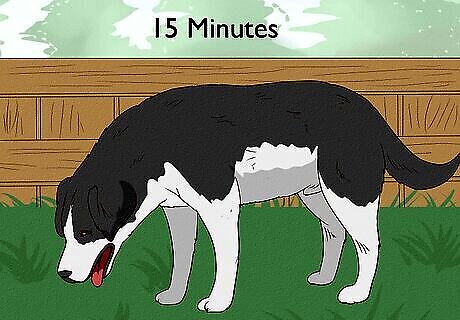
Watch your dog for about 15 minutes. Take it outside and watch it closely. This should help by just getting your dog moving. It will also be a better location for your dog to vomit. If the peroxide has not induced vomiting after 15 minutes, give the dog another dose and wait.

Do not give anymore peroxide. If the dog has still not vomited after thirty minutes, do not give it another dose. Too much peroxide can harm him or her. There are possible side effects to ingesting Hydrogen Peroxide, even once. These include mild to severe stomach and esophagus irritation and inflammation, possible aspiration (getting the material in the lungs which could cause death) and even having bubbles form in the bloodstream (also potentially deadly).
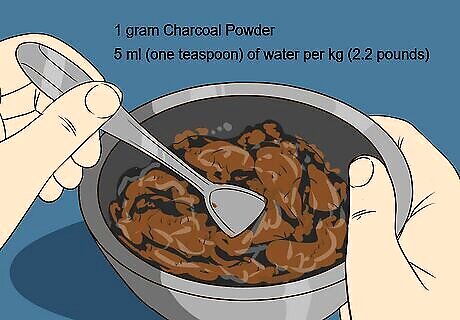
Try giving your dog activated charcoal as a last ditch effort. Activated charcoal may help with preventing the absorption of the toxic elements of the chocolate from the intestines. A typical dose of charcoal is 1 gram of charcoal powder mixed with 5 ml (one teaspoon) of water per kg (2.2 pounds) of dog body weight. This is really a last ditch effort to help your dog in the absence of any professional veterinary care, and ideally should only be done on the advice of your veterinarian. You do not want to give activated charcoal to a dog that is vomiting, tremors or seizuring. If you get charcoal in the lungs, that can be fatal to the dog. It is very difficult to get a large amount of charcoal into a dog without a stomach tube, and you will need to repeat every 4-6 hours for 2-3 days. Note that your dog’s stool will be black and constipation is possible. Also, one serious side effect of charcoal administration is elevated sodium levels in the blood which can cause tremors and seizures. These symptoms will look just like the neurological problems associated with chocolate toxicity. You will need to be very careful administering this product because it will stain fabric, carpet, paint, some plastics black, often permanently. If your dog does not eat the charcoal on its own, mixed with a little canned food, then syringing into their mouth may be needed. Unfortunately, this raises the danger level considerably because of the chance for getting the charcoal in the lungs and is therefore not recommended. Avoid using charcoal with Sorbitol repeatedly, as this increases the chances of diarrhea and dehydration and more serious complications for your pet.




















Comments
0 comment